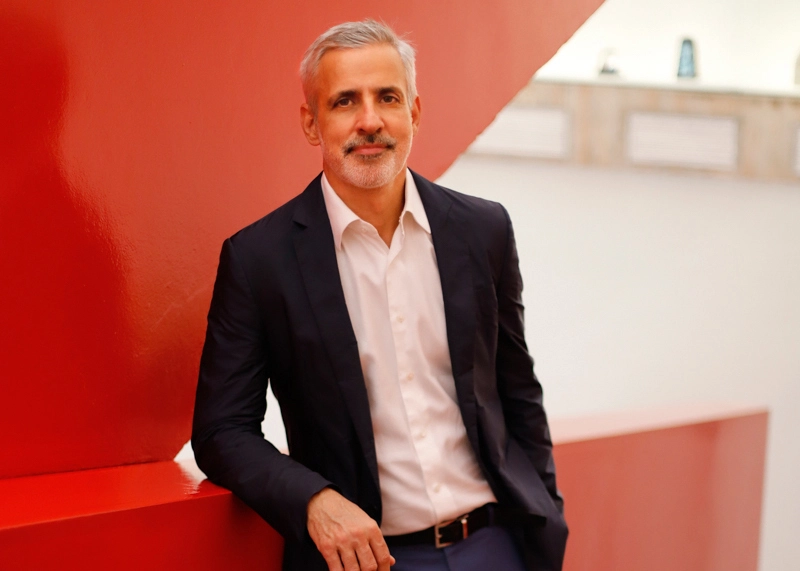
Daniel Cabrel
The 2024 edition of the Venice Biennale, the world’s most important recurring art festival, will focus on outsiders, foreigners, and more, highlighting artists who have traveled at various points in their careers.
Its curator, Museu de Arte de São Paulo artistic director Adriano Pedrosa, revealed the biennial’s theme at a press conference held Thursday morning. With that announcement, there are fewer than 10 months to go before the Venice Biennale opens in Italy on April 20, 2024.
Pedrosa has named the show “Foreigners Everywhere,” a reference to a 2004 Claire Fontaine piece featuring that phrase spelled out in many different colors and languages. That work is itself an allusion to a Turin-based anarchist collective of the same name in Italian, Stranieri Ovunque.
At MASP, Pedrosa has gained a reputation for game-changing exhibitions that find innovative ways of slicing art history, often with a stated focus on race, gender, and sexuality. He’s best known for an exhibition series known as “Histórias,” the best-known show of which, focused on Afro-Atlantic histories, traveled to the US in an abridged form.
Pedrosa, who was born in Rio de Janeiro, is the first Latin American ever to organize the Venice Biennale, an exhibition that has historically been curated by European men.
“Foreigners Everywhere” builds on the work Pedrosa has done at MASP with a show that he said would emphasize a multiplicity of races, genders, and nationalities, all in service of what he called “a celebration of the foreign, the distant, the outsider, the queer, as well as the indigenous.”
“Artists have always travelled under the most diverse circumstances, moving through cities, countries and continents, a phenomenon that has only grown since the late 20th century—ironically, a period marked by increasing restrictions on dislocation or displacement of people,” Pedrosa said in a statement. “The Biennale Arte 2024 will focus on artists who are themselves foreigners, immigrants, expatriates, diasporic, émigrés, exiled, and refugees—especially those who have moved between the Global South and the Global North.”
Pedrosa’s Biennale theme suggests a continuation of what was started in 2022 by Cecilia Alemani, whose edition was titled “The Milk of Dreams” and centered around female and nonbinary artists, with men accounting for fewer than a tenth of the 200-plus artists she included. That exhibition also made waves by including a grouping of “capsule” shows composed mainly of art from decades ago that provided her focus on Surrealism’s reemergence with a historical grounding.
The 2024 edition will include what Pedrosa is calling a “Nucleo Contemporaneo” and a “Nucleo Storico,” sections dedicated to new and old works, respectively. That latter portion aspires to expand the history of modernism beyond Europe and North America.
“We are all too familiar with the history of modernism in Euroamerica, yet the modernisms in the Global South remain largely unknown and thus they assume a truly contemporary relevance—we urgently need to learn more about and from them,” Pedrosa said. “European modernism itself travelled far beyond Europe throughout the 20th century, often intertwined with colonialism, and many artists in the Global South travelled to Europe to be exposed to it. Yet modernism was appropriated, devoured and cannibalized in the Global South, repeatedly taking on radically new shapes and forms in dialogue with local and indigenous references.”
A part of the “Nucleo Storico” will be devoted to what Pedrosa called “the worldwide Italian artistic diaspora in the 20th century,” with artists from the country who traveled and moved to Africa, Asia, Latin America, and elsewhere.
Pedrosa’s theme will apply only to the main exhibition of the Biennale, which also includes dozens of national pavilions that are facilitated by their respective host countries.
Some of those countries have already begun announcing their representatives, with Julien Creuzet doing the French Pavilion, John Akomfrah doing the British Pavilion, Kapwani Kiwanga doing the Canadian Pavilion, and more.
Robert Cicutto, president of the Venice Biennale, praised Pedrosa’s concept as one that could potentially prove innovative for the 128-year-old art exhibition.
“I am certain that the 60th International Art Exhibition and its curator will be able to move us and, as the curator of the 18th Biennale Architettura Lesley Lokko said, fill in those gaps in art history with many heretofore neglected artists,” Cicutto said in a statement.


